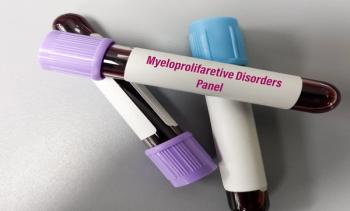
Researchers Find Possible Treatment Target for Heart Failure
Researchers at the University of Alabama at Birmingham first isolated the kinase HIPK2 from among hundreds of potential targets by using bioinformatics to hone in on the protein kinase as a target for study.
Restoring a signaling kinase in the heart muscle could hold the key to treating heart failure, which has emerged as a rising
Researchers at the University of Alabama at Birmingham first isolated the kinase HIPK2 from among hundreds of potential targets by using bioinformatics to hone in on the protein kinase as a target for study. “Among those candidates, we identified a potential modulator of heart failure—HIPK2, a kinase whose role in cardiac biology has never been studied before,” Hind Lal, PhD, senior author of the study, said
The findings were recently published in the journal Circulation, the official journal of the American Heart Association.
“To determine the role of HIPK2 in human hearts, we examined the expression of HIPK2 in heart tissue from patients with end-stage ischemic cardiomyopathy,” Lal said. “The expression of HIPK2 was dramatically decreased in failing hearts compared with normal human hearts.”
After identifying HIPK2 as the target for study, Lal’s team set up several tests. First, they deleted the HIPK2 protein from heart muscle cells to see if this caused heart muscle deterioration. They observed enhanced programmed cell death, or apoptosis, at the molecular level, in the cells of the heart muscle.
Then, they tested the idea of adding the kinase back once it was depleted. The team wanted to see if restoring kinase back to in the “knockout mice” would save them from heart failure, because this would suggest a future treatment. They used gene therapy to add overexpression of the kinase MEK1 to the knockout heart muscle cells; this protein restored impaired signaling of ERK phosphorylation in the knockout mice and slowed the cell death.
Finding treatments to slow or reverse heart failure is a priority as the population ages, because heart failure is becoming a more common cause of death. A recent study appearing in JAMA Cardiology found that the rate of death and the total number of deaths with heart failure as the underlying cause have increased substantially between 2011 and 2017. The researchers from Kaiser Permanente reported a 20.7% increase in the age-adjusted mortality rate for heart failure and a 38% increase in the number of heart failure deaths.
The so-called “silver tsunami” has many implications, and pharmaceutical leaders are pointing to the drug class of sodium glucose co-transporter 2 (SGLT2) inhibitors, first approved to treat type 2 diabetes, as a potential solution. The drug class has been shown to reduce hospitalization for heart failure. Last month,
Reference
Guo Y, Sui JY, Kim K, et al. Cardiomyocyte HIPK2 maintains basal cardiac function via ERK signaling [published online October 4, 2019]. Circulation. doi: 10.1161/CIRCULATIONAHA.119.04074.
Newsletter
Stay ahead of policy, cost, and value—subscribe to AJMC for expert insights at the intersection of clinical care and health economics.















































